Pan Am Ashtrays, Cigarette Lighters & Matches
In the era when cigarette smoking ranged between fashionable and socially acceptable Pan Am produced many different styles of ashtrays, matches and cigarette lighters. These items were used in-flight at airports and at ticket offices around the world. These items were also distributed at hotels and other venues to promote Pan Am.
The 4 blue aluminum ashtrays below are from the 1950s. They are three sided and have the Pan Am logo and a different message on each side. The top two are in English showing the famous “World’s Most Experienced Airline” which was the tag line to Pan Am advertising for many years. Below the English ashtrays are a Portuguese version on the left and an Italian version on the right. The glass ashtray at the bottom shows the “winged globe” logo in use with Pan Am from 1944 to 1957.
Directly below is four sided aluminum ashtray from the 1960s. It has the “Pan Am” letters on two sides and globe logo on two sides. Below this are two milk glass ashtrays. The ashtray on the left is from the 1960s (as the “Pan Am” letters do not touch) while the ashtray on the right is from the 1970s (the company modified the “Pan Am” letters to touch in mid 1973). Finally, at the bottom is a large white porcelain ashtray with a deep bowl. It was made by Noritake in Japan. Since smoking has fallen out of favor this ashtray has adapted nicely to vegetables and dip….after a good washing!
From approximately 1972 to 1979 Pan Am offered dinning room service to First Class customers aboard the Boeing 747 and 747SP. The 747 dinning room accommodated 12 while the 747SP accommodated 16. During that era Pan Am had glass ashtrays on the tables in the dinning room (an example can be seen above in the 1970s catering section in a picture of a flight attendant pouring coffee in the dinning room of the 747SP). Below are 4 examples of these ashtrays. The “First Class” ashtray (top left) was the first of this vintage. In 1977 the 50th Anniversary ashtrays were used (bottom) and finally from 1978 until the dinning rooms were phased out about a year later the “Pan Am” with stylized logo (top right) was used.
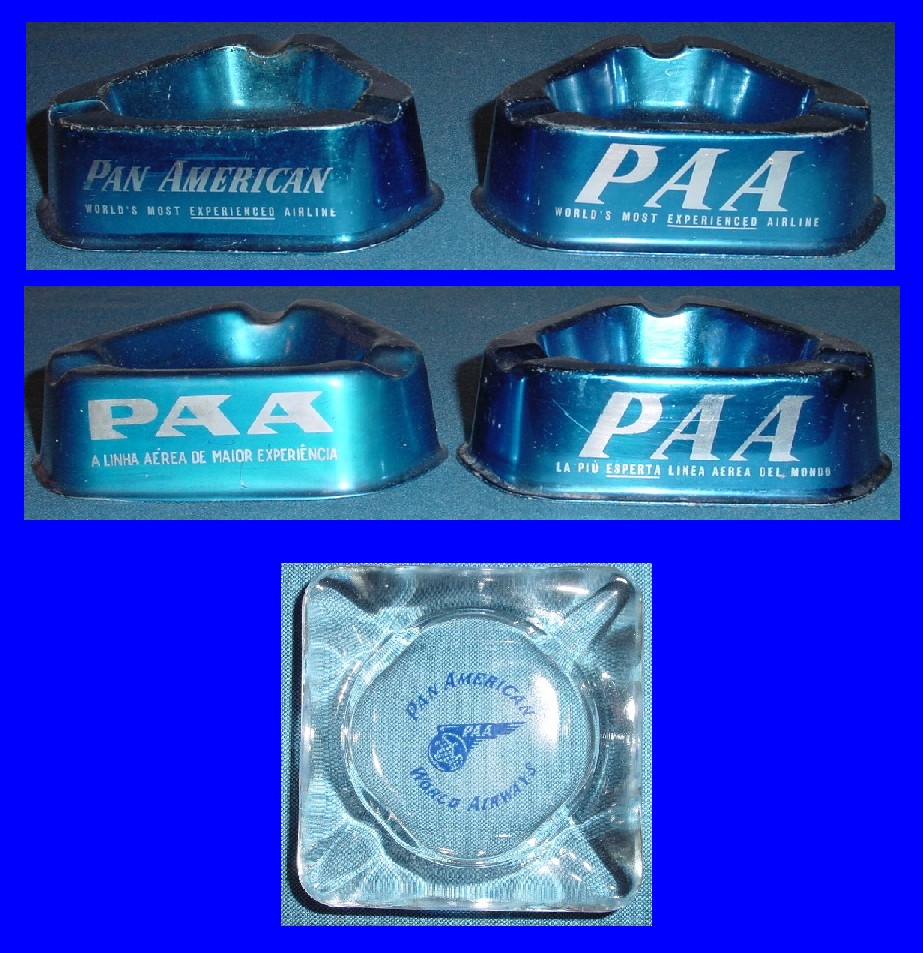
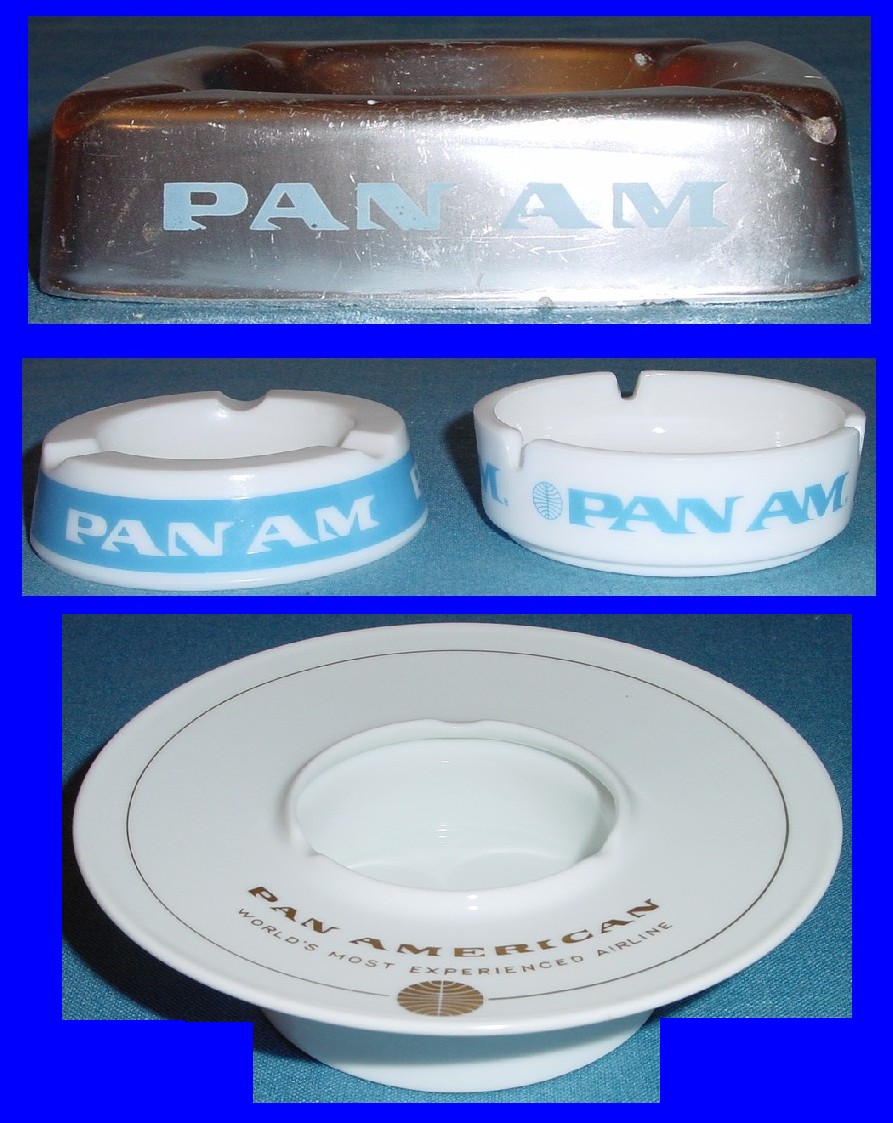
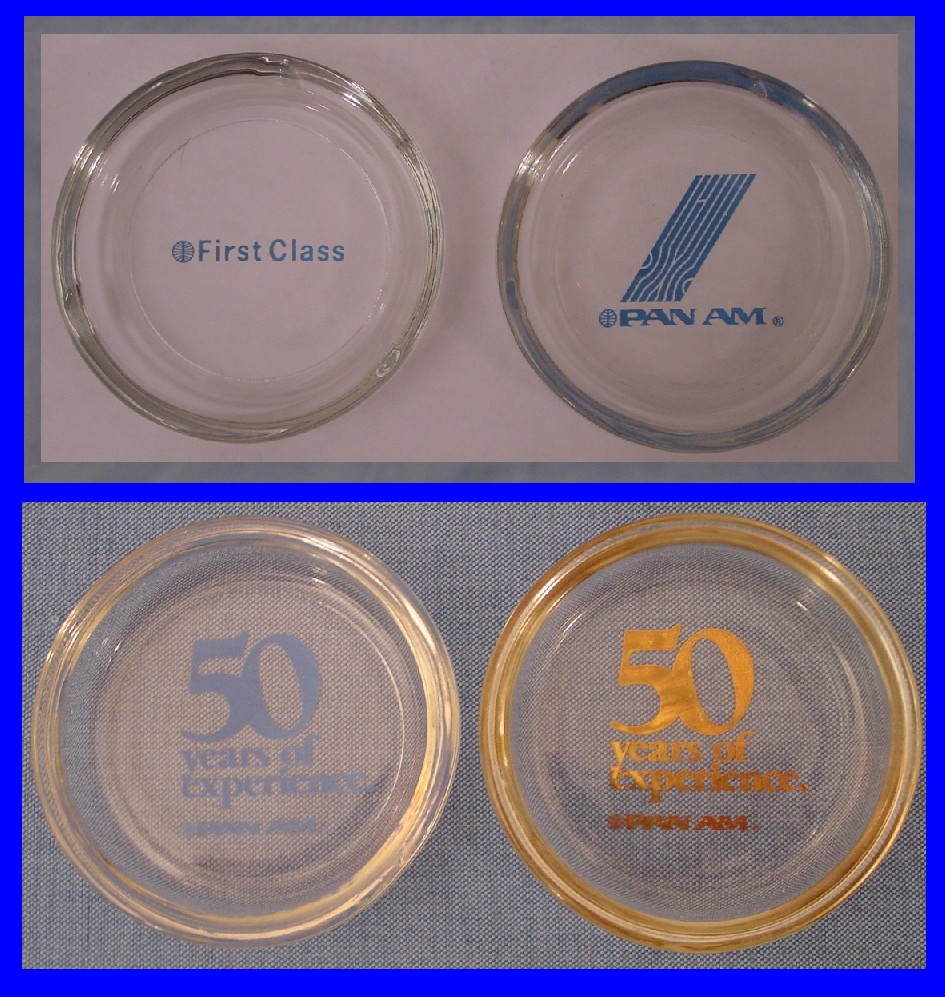
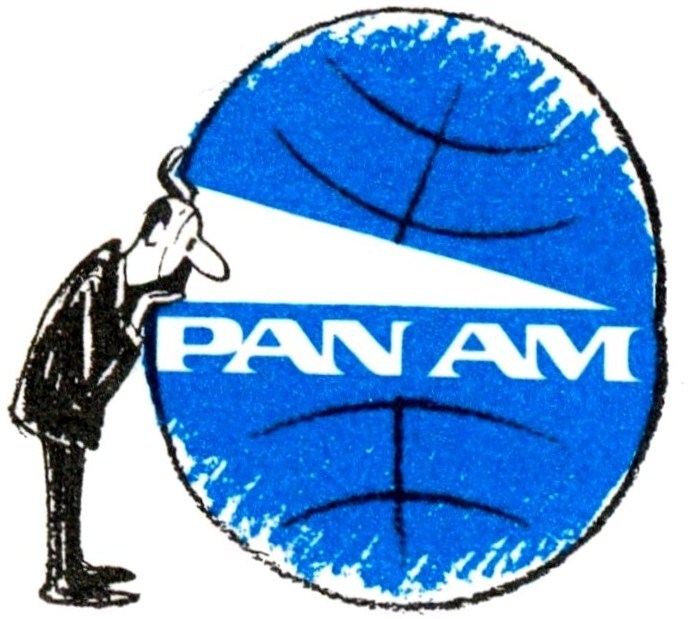
everythingPanAm.com
The Virtual Pan Am Museum
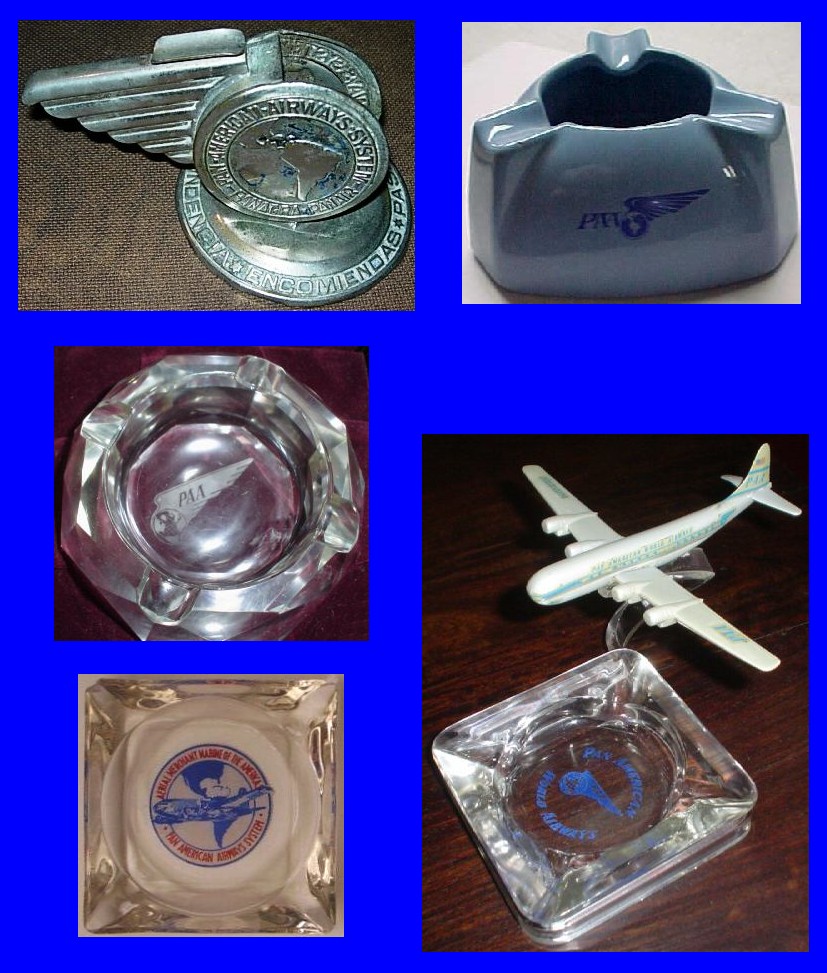
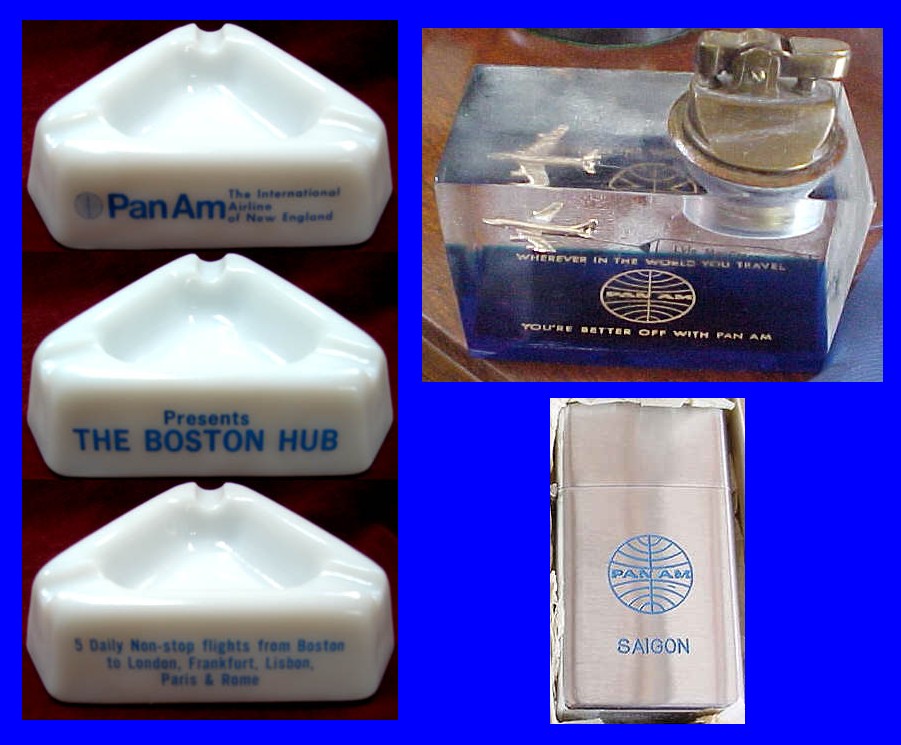
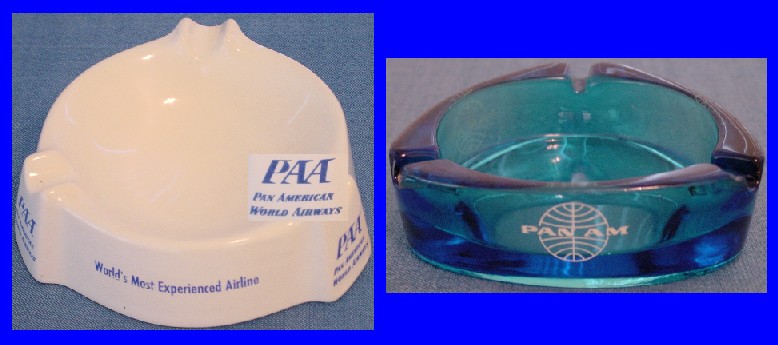
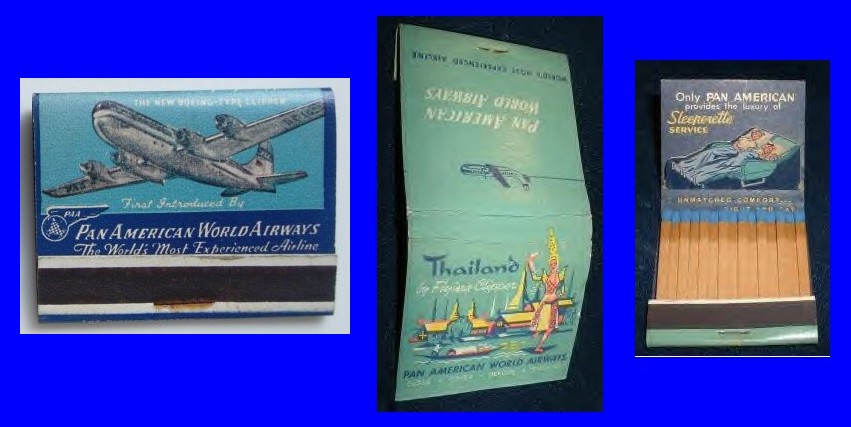
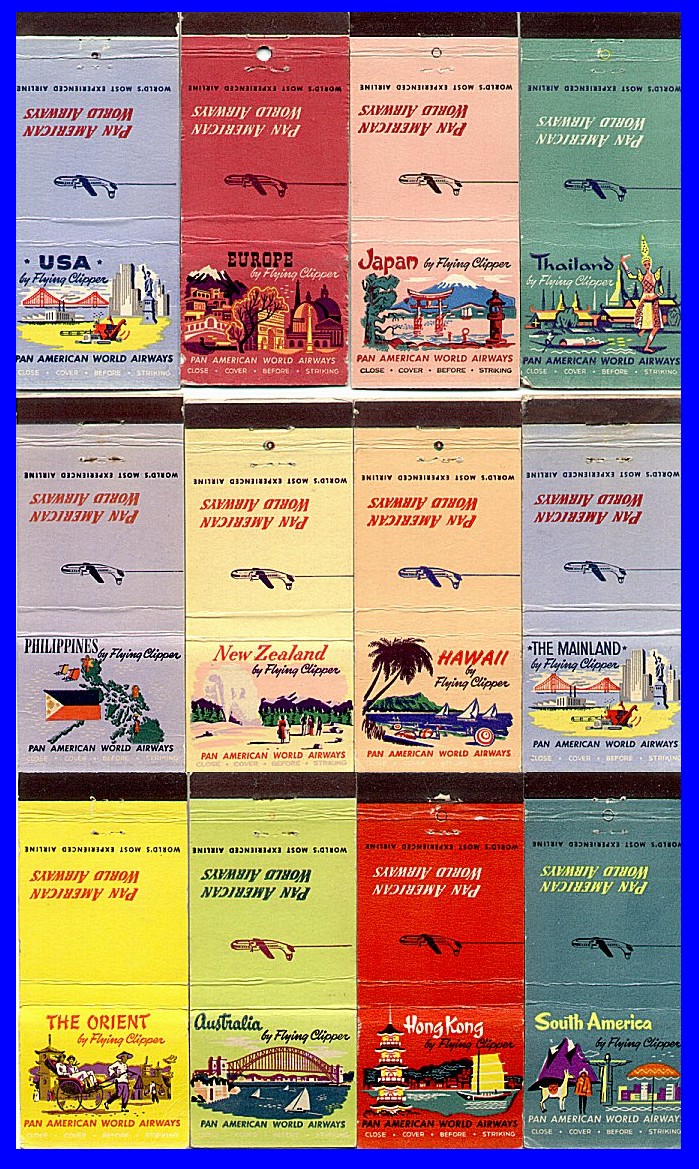
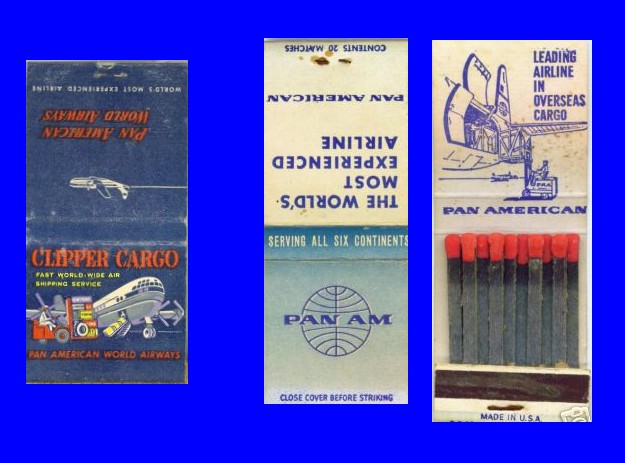
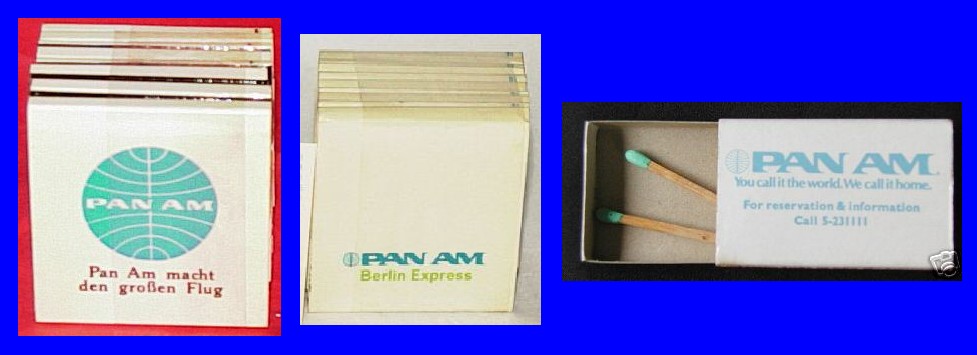
Below on the left is a Pan American Ashtray from the 1930s built into the company’s famous “winged globe” logo. Below on the right is a blue porcelain ashtray which also features the company’s “winged globe” logo fired into the glaze of the piece.
In the middle on the left is a heavy cut glass ashtray with the Pan Am logo etched into the glass on the bottom. This pieces is believed to have been issued by Pan American in the late 1940s or early 1950s.
.
In the middle on the left is a heavy cut glass ashtray with the Pan Am logo etched into the glass on the bottom. This pieces is believed to have been issued by Pan American in the late 1940s or early 1950s.
.
Above on the left is a glass ashtray with red, white and blue Pan American artwork painted on the bottom. This ashtray was very unusual as Pan American did not start to use the color red for “branding” until the mid 1970s. The ashtray on the right dates from the late 1940s or early 1950s and features a Boeing 377 “Stratocruiser” in-flight.
Below on the left is a white porcelain ashtray manufactured in Germany from the 1950s. Each of the three cigarette positions has “PAA” markings (enlarged and super imposed on the picture). Between cigarette positions are various marketing messages about Pan Am’s global network.
Below on the right is a blue glass ashtray from the late 1950s or early 1960s. When Pan Am first began using the globe logo (without the wings) the “PAN AM” lettering was sometimes outside the parameters of the globe.
Below on the right is a blue glass ashtray from the late 1950s or early 1960s. When Pan Am first began using the globe logo (without the wings) the “PAN AM” lettering was sometimes outside the parameters of the globe.
In the early 1970s Pan Am created a mini-hub in Boston. Aircraft bound for Europe would begin at different US domestic cities (Detroit, Chicago, Washington DC, Philadelphia), make an en-route stop in Boston and then continue onto Europe. These domestic flights were all timed to arrive in Boston around the same time to allow customers to connect with the onward flights to Europe. Unfortunately, the fuel crisis of the 1973-4 period caused Pan Am to discontinue the hub in favor of it’s New York, JFK hub. Below on the left is an ashtray promoting the short-lived hub.
Below on the right are two Pan Am cigarette lighters. The larger lighter was intended for display on a desk or coffee table. The smaller pocket lighter below with the “Saigon” markings was most likely not even produced by Pan Am. Pan Am was the largest US airline operating to Vietnam during the 1960s-1970s Vietnam War. As such the Pan Am logo was well known to the Vietnamese. Many articles with logos of American companies were produced for sale to US military personnel by Vietnamese entrepreneurs. Most likely this lighter is from that category.
Below on the right are two Pan Am cigarette lighters. The larger lighter was intended for display on a desk or coffee table. The smaller pocket lighter below with the “Saigon” markings was most likely not even produced by Pan Am. Pan Am was the largest US airline operating to Vietnam during the 1960s-1970s Vietnam War. As such the Pan Am logo was well known to the Vietnamese. Many articles with logos of American companies were produced for sale to US military personnel by Vietnamese entrepreneurs. Most likely this lighter is from that category.
Below are two examples of matches form the 1950s. On the left is a set of matches promoting the Pan American Boeing 377 “Stratocruiser.” On the right is a matchbook promoting Pan American’s service to Thailand. In many instances Pan American had messages on both the outside and inside of the match book. In this case the inside message promotes Pan American’s First Class “Sleeperette” seats for long haul travel.
Below are 12 examples of other “destination” matches produced by Pan Am in the 1950s.
For many years Pan American was the largest air cargo carrier in the world. Below are two examples of “Clipper Cargo” matchbook covers from the 1950s. On the left is a matchbook promoting the Boeing 377 “Stratocruiser” (which only carried belly cargo). On the right is a matchbook promoting an all cargo DC6 aircraft. The enlarged cargo loading door can be seen on the inside of the matchbook.
Below on the left is a German language matchbook cover from the 1960s. In the middle is an English language matchbook cover from the 1970s promoting Pan Am’s extensive service to and from Berlin. On the right is a matchbook produced in Hong Kong in the 1970s. On one side is a Pan Am logo with the local Hong Kong reservations phone number. On the other side is a promotion for a local Hong Kong hotel.
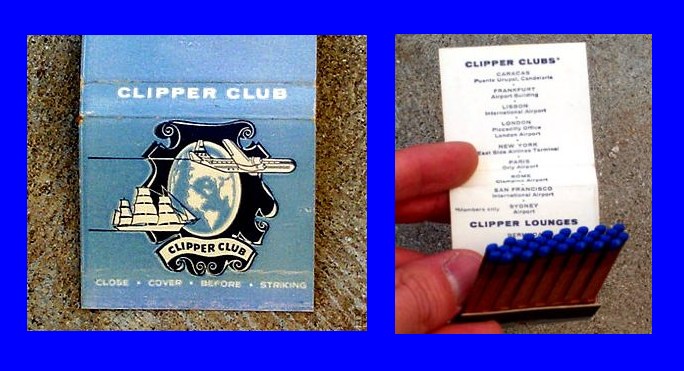
Below, a set of 1950s matches from Pan Am's Clipper Club airport lounges. The inside gives a list of club locations.
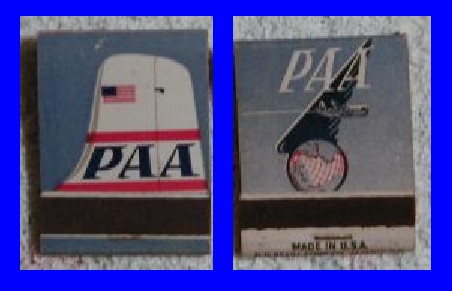
To the right are matches from the 1950s that feature a Pan Am aircraft tail on one side and the company logo on the other.
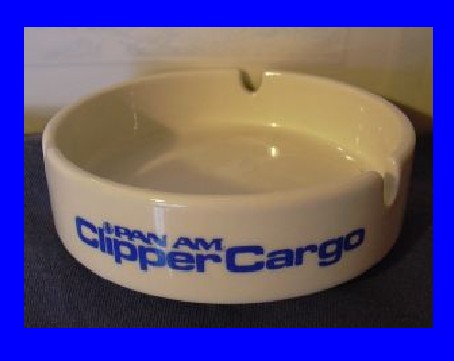
To the left a 1970s ashtray from Pan Am's "Clipper Cargo" Divison
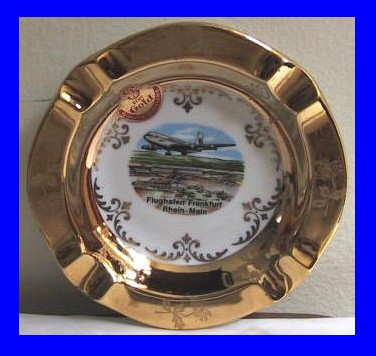
This unusual gold rim ashtray to the right was not issued by Pan Am. It dates from the 1960s. It was made in Germany and sold as a souvenir at the Frankfurt Airport.